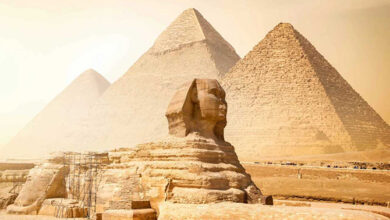35 Percent of the World’s Wetlands Have Disappeared in the Last 50 Years

Known as the world’s most threatened ecosystem, 35 percent of wetlands have disappeared in the last 50 years. Although wetlands cover approximately 6-7 percent of the world’s land surface, this situation poses a great threat to the future of the world as they are home to 40 percent of all plant and animal species.
World Wetlands Day is celebrated on February 2 every year around the world to raise awareness about wetlands. The Convention for the Protection of Wetlands, known as the “Ramsar Convention”, was signed on February 2, 1971, in Ramsar, Iran. The convention obliges 170 parties to protect wetlands and ensure their rational management.
The day, which has been celebrated since 1997 to attract the attention of the public, was accepted as “World Wetlands Day” with the decision of the United Nations (UN) General Assembly dated 30 August 2021.
All kinds of coastal and inland wetlands in the countries that are party to the said convention are called “Ramsar Area”.

There are more than 2,400 Ramsar Sites around the world. This area is larger than Mexico and covers 2.5 million square kilometers.
The Cobourg Peninsula in Australia was designated the world’s first wetland in 1974.
Bolivia is the country with the largest wetland under the protection of the convention at 148 thousand square kilometers. The Rio Negro region in Brazil, on the other hand, is seen among the world’s largest wetlands with 120,000 square kilometers.
Canada, Chad, Congo and the Russian Federation each have over 100,000 square kilometers of wetland designated, while Ngiri-Tumba-Maindombe in Congo and Queen Maud Bay in Canada each cover 60,000 square kilometers.

RAMSAR AREAS IN TURKEY UNDER PROTECTION
Turkey became a party to the Ramsar Convention in 1994 to commit to the conservation and wise use of its wetlands.
Thus, Sultan Marshes, Seyfe Lake, Burdur Lake, Manyas (Bird) Lake, Göksu Delta, Akyatan Lagoon, Kızılırmak Delta, Uluabat Lake, Gediz Delta, Yumurtalık Lagoon, Meke Lake, Kızoren Pothole, Kuyucuk Lake and Nemrut Caldera are named as Ramsar Area. identified and protected.
Within the scope of national legislation, a total of 95 areas covering approximately 10 thousand 850 square kilometers, 59 of which are of national and 22 of local importance, have been declared and registered as “wetland”.
Within the scope of the contract, management plans for 70 wetlands were prepared and put into practice in 1999-2021.
Wetlands, the world’s most threatened ecosystem, are disappearing 3 times faster than forests.
About 90 percent of the world’s wetlands are believed to have been destroyed since the 1700s. Only 64 percent of these areas have disappeared in the past 100 years.
Wetlands are thought to decrease by about 1 percent each year. In the 50 years since 1970, 35 percent of wetlands around the world have disappeared.

WHAT IS THE FUNCTION OF WETLANDS?
Although wetlands cover approximately 6-7 percent of the world’s land surface, 40 percent of all plant and animal species live or breed in these areas.
It is stated that wetlands also play a very important role in climate change through the capture and release of fixed carbon in the air. Coastal wetlands are measured to retain and store carbon 55 times faster than tropical rainforests.
Wetlands play a role in reducing the impact of extreme weather events such as floods, droughts, and excessive precipitation. Feeding or balancing groundwater, these areas control floods by storing excess water in heavy rainfall.
Wetlands are important in terms of obtaining drinking water and providing food supply. While groundwater is thought to provide drinking water to approximately 3 billion people, rice grown in wetlands is the staple food of 3.5 billion people.
In recent years, in which global warming and human destruction have increased, technology is used, various plans and programs are carried out in the protection of wetlands, which have been decreasing day by day throughout the world.






